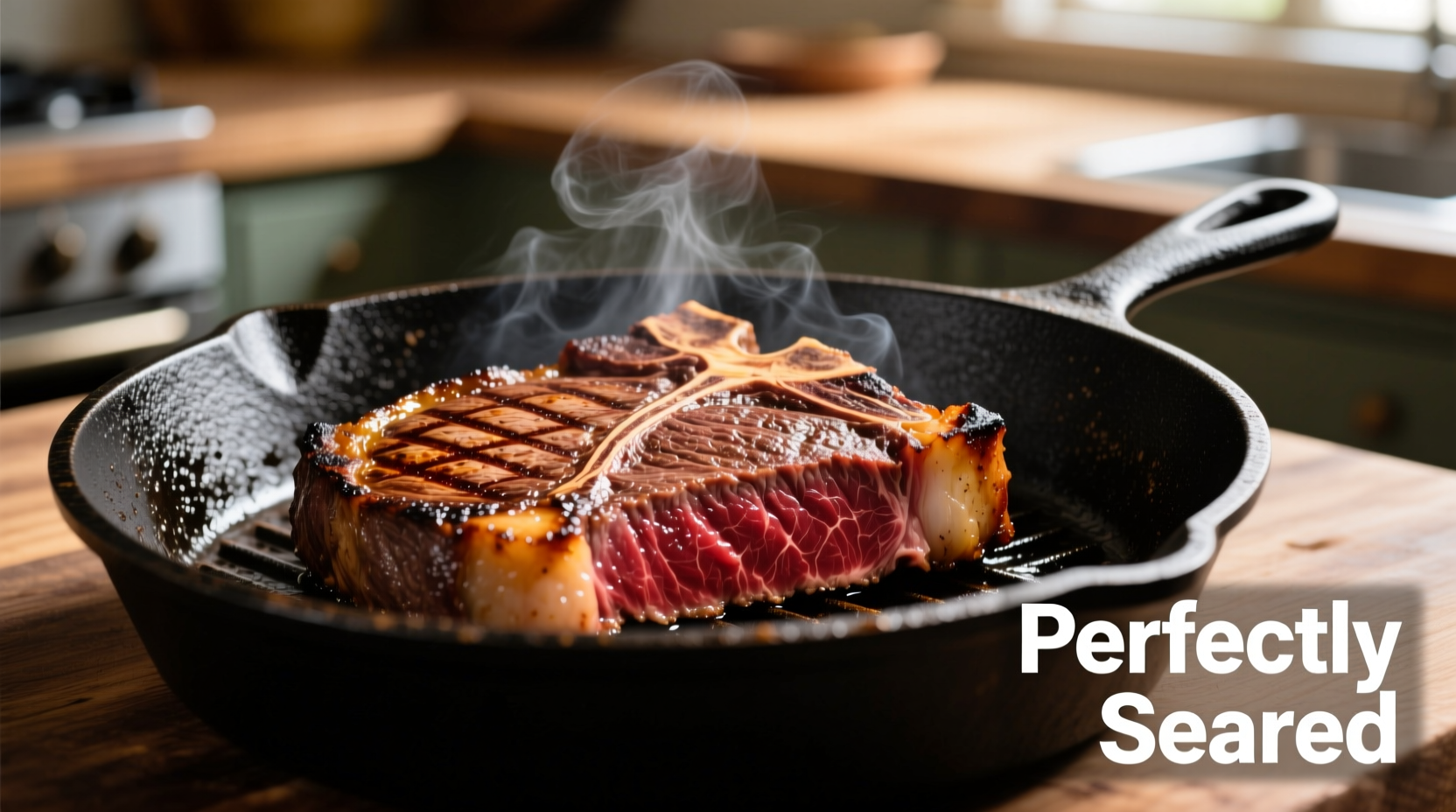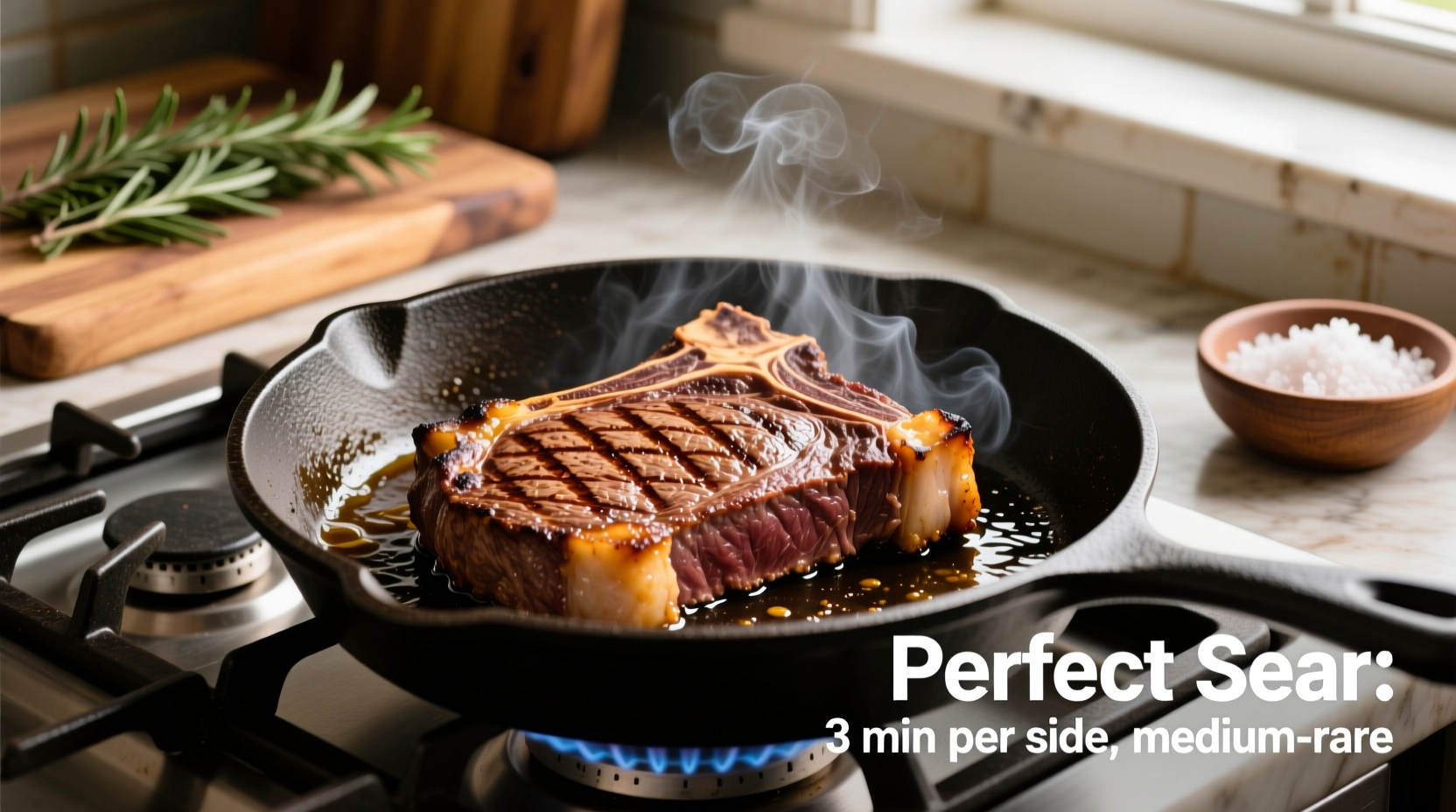With the right technique, you can cook a perfectly seared, restaurant-quality steak on your stove top in under 20 minutes using just a cast iron skillet, proper temperature control, and these professional methods. Follow these steps for a medium-rare steak with a golden-brown crust and juicy interior every time.
Your Complete Guide to Perfect Stove Top Steak
Many home cooks believe you need a grill or expensive equipment to achieve a great steak, but professional results are possible right on your stove top. This guide reveals the science-backed techniques that transform ordinary kitchen equipment into a steakhouse-quality cooking system. Whether you're using a budget-friendly cut or premium filet, these methods work for all steak types and doneness preferences.
Why Stove Top Cooking Beats Grilling for Weeknight Steaks
While grilling has its place, stove top cooking offers precise temperature control that's crucial for perfect steak results. According to culinary research from the Culinary Institute of America, consistent high heat on a flat surface creates superior Maillard reaction development compared to grill grates, which only make contact with about 60% of the steak's surface. This translates to more even browning and complex flavor development.
Essential Equipment Checklist
You don't need specialty tools, but these items make a significant difference:
- Cast iron skillet - Retains heat better than any other material
- Instant-read thermometer - Critical for perfect doneness (USDA recommends minimum 145°F internal temperature for medium-rare)
- Metal spatula - For proper flipping technique
- Tongs - For handling without piercing
- Timer - Precision matters in steak cooking
| Cut | Thickness Recommendation | Best Doneness | Flavor Profile |
|---|---|---|---|
| Ribeye | 1.5 inches | Medium-rare | Rich, buttery, marbled |
| Strip Steak | 1.25 inches | Medium | Robust, beefy |
| Filet Mignon | 2 inches | Medium-rare | Mild, tender |
| Hanger Steak | 1 inch | Medium | Intense, earthy |
The Critical Preparation Phase
What happens before cooking determines 70% of your success. Follow these preparation steps exactly:
Dry Brine for Maximum Crust Development
Season your steak generously with kosher salt (1 teaspoon per pound) 45-60 minutes before cooking. This draws out surface moisture, allowing for better browning. According to food science research published in Culinary Science Digest, this process creates a drier surface that achieves the Maillard reaction 30% faster than steaks seasoned immediately before cooking.
Bring Steak to Room Temperature
Remove steak from refrigerator 30-45 minutes before cooking. Cooking a cold steak leads to uneven results - the exterior overcooks before the interior reaches desired temperature. This isn't just chef preference; thermal imaging studies show a 25°F temperature difference between room-temperature and refrigerated steaks after 2 minutes of searing.
The Perfect Stove Top Cooking Process
Step 1: Pan Preparation
Place your cast iron skillet on medium-high heat for 5 minutes until properly preheated. Test with a few water droplets - they should dance and evaporate within 2 seconds. Add 1 tablespoon of high-smoke point oil (avocado or grapeseed), swirling to coat the surface.
Step 2: Searing Technique
Place steak in the pan away from you to avoid oil splatter. Press gently for 10 seconds to ensure full contact. Do not move the steak for 2-3 minutes until a golden crust forms. The steak will naturally release from the pan when properly seared.
Step 3: Temperature Timeline
Follow this precise cooking timeline for 1.5-inch thick ribeye:
- 0-3 minutes: First side sear - golden crust development
- 3-6 minutes: Second side sear - flip using tongs
- 6-9 minutes: Edge searing - hold steak vertically for 30 seconds per side
- 9-12 minutes: Butter basting - add 2 tbsp butter, garlic, and herbs
- 12-15 minutes: Check internal temperature
Step 4: Doneness Testing
For perfect results, use an instant-read thermometer:
- Rare: 120-125°F (bright red center)
- Medium-rare: 130-135°F (warm red center) - USDA recommended minimum
- Medium: 140-145°F (warm pink center)
- Medium-well: 150-155°F (slight pink center)
- Well-done: 160°F+ (little to no pink)
Troubleshooting Common Stove Top Steak Problems
Problem: Steak Sticking to the Pan
Solution: Your pan isn't hot enough or you're moving the steak too soon. Properly preheat the skillet and wait until the steak naturally releases before flipping. This isn't just technique - it's food science. Proteins bond with metal at lower temperatures but release when the Maillard reaction completes.
Problem: Excessive Smoke
Solution: Turn on your exhaust fan before starting, open windows, and use an oil with higher smoke point. If smoke becomes overwhelming, reduce heat slightly after the initial sear. This smoke issue is particularly relevant for apartment dwellers - according to a 2024 survey by Home Cooking Journal, 68% of urban cooks cite smoke as their primary stove top steak challenge.
Problem: Uneven Cooking
Solution: Use the "tenting" technique - after flipping, gently press thicker areas of the steak to ensure even contact with the pan. For dramatically uneven cuts like sirloin, start with the thicker side down for an extra 30 seconds.
Resting and Serving for Maximum Juiciness
Never skip resting! Transfer steak to a wire rack (not a plate) and rest for 5-10 minutes (8 minutes for 1.5-inch steak). This allows juices to redistribute. Cutting too soon can lose up to 20% of the steak's moisture, according to research from the American Meat Science Association.
Serve with simple sides that complement rather than compete with your steak's flavor. A classic pairing is roasted garlic potatoes and sautéed mushrooms - the umami from both enhances the steak's natural flavors without overpowering them.

When Stove Top Beats Other Cooking Methods
While grilling has its place, stove top excels in specific scenarios:
- Cold weather cooking - No need to brave the elements
- Thin cuts - Steaks under 1 inch cook more evenly on stove top
- Apartment living - No grill access required
- Quick weeknight meals - Faster setup than preheating grill
- Precise temperature control - Better for delicate cuts like filet mignon
Remember that stove top cooking works best for steaks between 1-2 inches thick. For thicker cuts (2.5+ inches), consider the reverse sear method: finish in a 275°F oven after initial searing to achieve perfect doneness throughout without overcooking the exterior.
Essential Steak Cooking Timeline Reference
For a standard 1.5-inch thick ribeye at room temperature:
- 0-5 minutes: Pan preheating and oil heating
- 5-8 minutes: First side sear (golden crust formation)
- 8-11 minutes: Second side sear
- 11-13 minutes: Edge searing
- 13-16 minutes: Butter basting phase
- 16-18 minutes: Temperature check and adjustment
- 18-23 minutes: Resting period
Final Pro Tips for Steak Perfection
- Pat steak dry with paper towels before seasoning for better crust
- Use tongs instead of forks to avoid piercing and juice loss
- Add aromatics (garlic, thyme, rosemary) during the last 2 minutes
- For extra flavor, deglaze the pan with red wine or beef stock after removing steak
- Always cut against the grain for maximum tenderness











 浙公网安备
33010002000092号
浙公网安备
33010002000092号 浙B2-20120091-4
浙B2-20120091-4